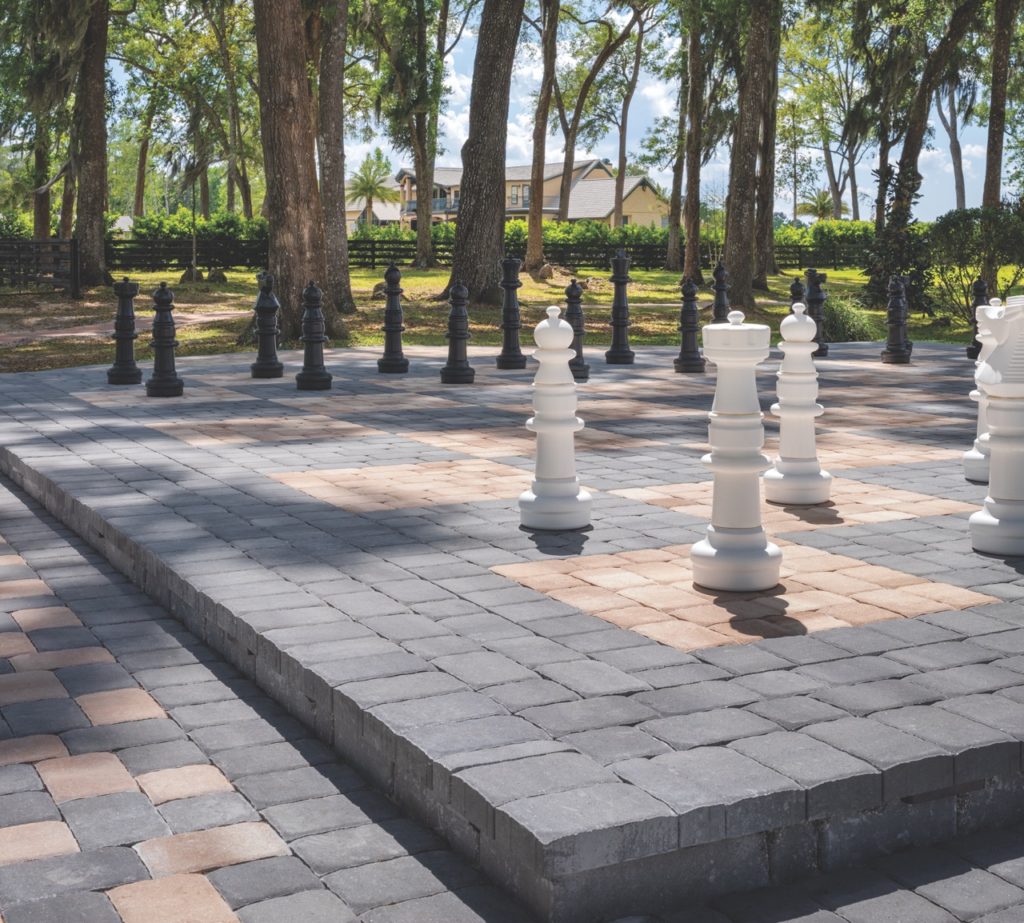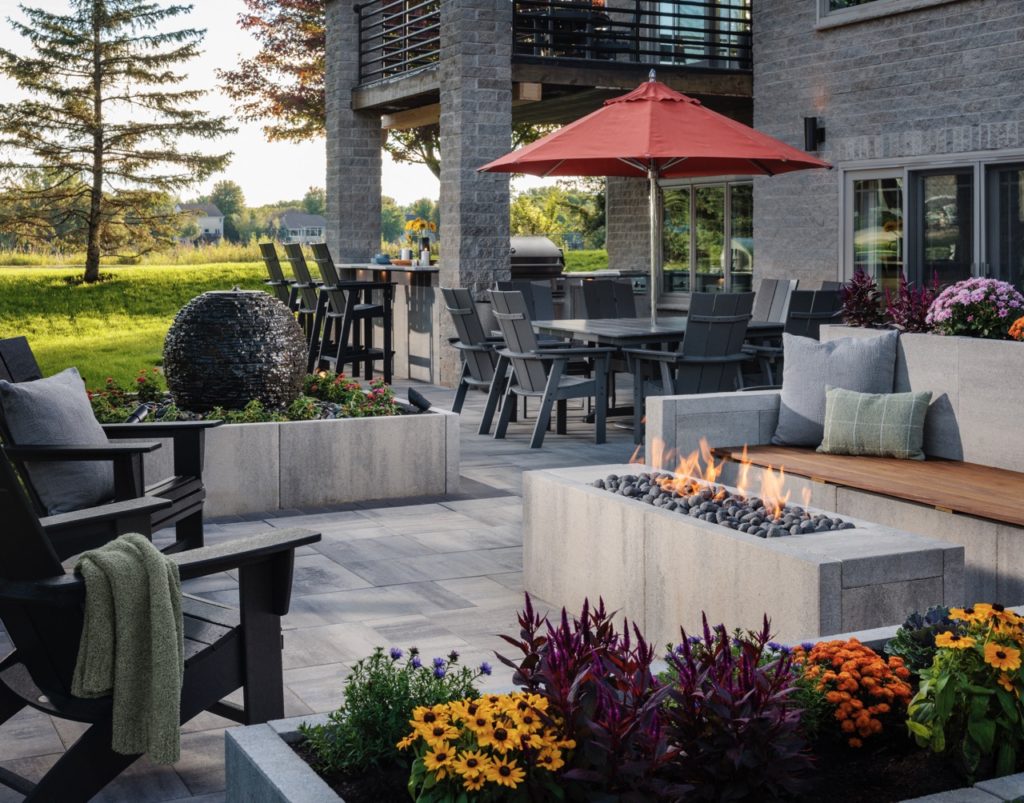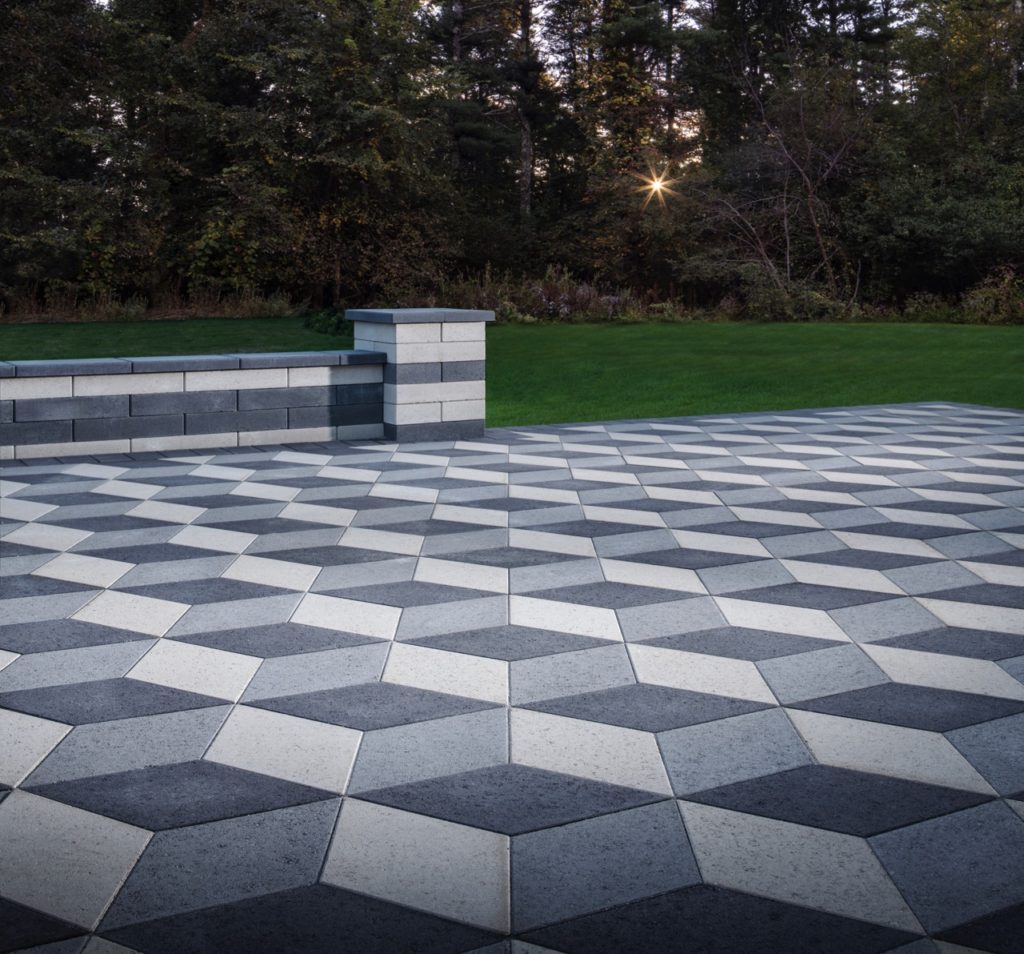All Great Projects Start with Design
Words: Joe Raboine
Words and Photos: Joe Raboine, Vice President of Design, Belgard/Oldcastle APG
The State of the Outdoor Living Industry
The way people spend time outdoors has changed over the past few years. Areas like patios and porches that were reserved for weekend parties or holiday barbecues are now integrated into everyday life. Your clients want to use their outdoor spaces to relax, unwind or even get some work done in the fresh air – meaning the way outdoor living areas are designed has changed as well.
Design is crucial to creating a beautiful, functional outdoor living space. Without a thoughtful design plan, you may encounter unexpected challenges during installation or not meet client expectations.

While some outdoor professionals may not consider themselves design experts, there are opportunities for everyone in the industry to be more well-versed in the concepts and principles of design. With outdoor living’s rise in popularity, it’s important to invest in upskilling and continuing education that will help you enhance your business and better serve clients.
The Designs Your Clients Want
The main component of outdoor design today is functionality, with aesthetics following closely behind. The core concept to keep in mind is that living is at the center of outdoor living design. Your clients need to be able to work, play, relax and carry out any of their daily activities outside just as they would inside – with some additions. It’s also important that the space seamlessly blends to look cohesive – from the product selections to the way it integrates with the surrounding landscape.
Take, for instance, an outdoor kitchen – one of the most consistently popular outdoor project requests. Whether it’s a simple grill island or a fully fleshed-out kitchen, the overall design and layout are important to ensure clients get the most out of their space. My team and I recently worked with a homeowner in Houston, Texas, to create an outdoor kitchen perfect for her family of five to spend more time outdoors. We talked with the homeowner about her inspiration and aesthetic but also tailored the final design to the home’s layout. There were large columns that had to be accounted for and required some creativity to ensure the installation was seamless.

Another recent project in the Dallas-Fort Worth area required a top-notch design to ensure functionality and the incorporation of multiple outdoor rooms within the space. The team opted for a more open layout so the space flowed naturally and did not feel closed in.
Both of these projects also utilized products that worked together for an overall cohesive design, such as modular hardscapes and panel systems, composite decking, fencing and railing solutions, outdoor kitchen accessories and more. Product selections were carefully curated to match style and color palettes but also ensure ease of installation.
Approaching Your Clients The Right Way
Outdoor design can seem intimidating for contractors and homeowners – but it’s all about the approach. When you have the right processes in place, you’ll be able to nail down the design and ensure you’re delivering the best service.
An initial phone consultation is always my first recommendation. Talk to the client, get to know them a little and understand what they are looking for. You need to get a feel for how they plan to use their outdoor space(s) and what kind of style and aesthetic they prefer. Being able to connect with your client personally before planning a site visit can go a long way.

Once you’ve had the first consultation, you should conduct a site visit. This gives you the foundation for your design, allowing you to see if you need to make tweaks to any initial concepts. You may get to the home and realize that more intensive work is required to get the site level, or you don’t have enough space for a certain feature of the design.
There also are technologies available today that help streamline the design process. Augmented reality (AR) is invaluable at showcasing designs to clients to get their buy-in. With AR, you can virtually “stick” a design into your client’s yard so they can see a nearly accurate representation. There also are templated design solutions that make it easier for clients to pick and choose what styles, products and features they want in their space. By starting with a templated design, you create a base that can be customized based on your client’s preferences and get them more involved with build.
Form & Function: What Makes Great Design
Great design incorporates many different practices, but form and function are key to wowing your clients. You have to achieve the right layout to ensure and maintain functionality for the space to be truly enjoyed.

Referencing the Houston project again, the angle of the home and yard, plus the features the client requested, required the team to give the patio a more unique shape than a traditional square or rectangle. The patio slightly juts into the yard in a hexagon shape to accommodate the full grill island and bar seating. Without the right design concept, this project would have been more difficult and time-consuming.
This plays into why site visits are such a critical aspect of the design process. You need to get a physical sense of the location in order to create an appropriate design concept. Things like elevation changes are often not as evident in a photo or video. We encountered this scenario with the Dallas project, as there were steep elevation changes that could not be properly seen without visiting the site. Luckily, we had a solid design plan that could be modified to accommodate the retaining wall that had to be constructed in order to support other elements of the project.
The smallest details also factor into creating a great overall design. Color, texture and accessories push designs to the next level, allowing you to customize the space to fit your client’s exact specifications. A simple textured paver can add depth and dimension to a project, making the space feel more unique to the client. Adding pops of color, whether through accessories, plants or other materials, injects personality and can draw the eye to certain features. Other accessory products, such as lighting, shade structures or privacy features, also are highly important to consider in the overall design to ensure functionality.

Adopting a Design-Forward Approach
Design is truly key to making outdoor living spaces where your clients will create lasting memories. Tools like AR, templated design software and product innovations are making it easier to adopt a design-centric approach to outdoor living. Having a great design means you create great projects that exceed client expectations and boost your portfolio.